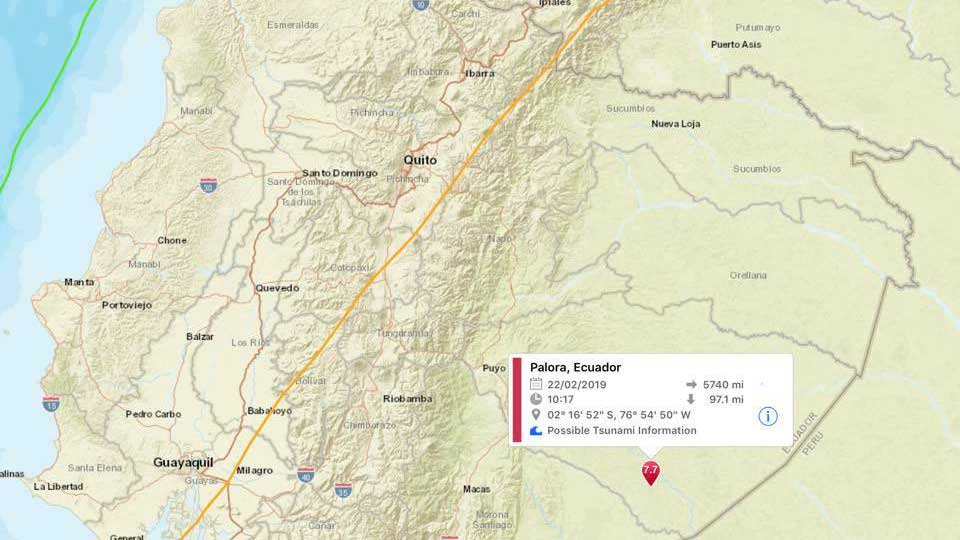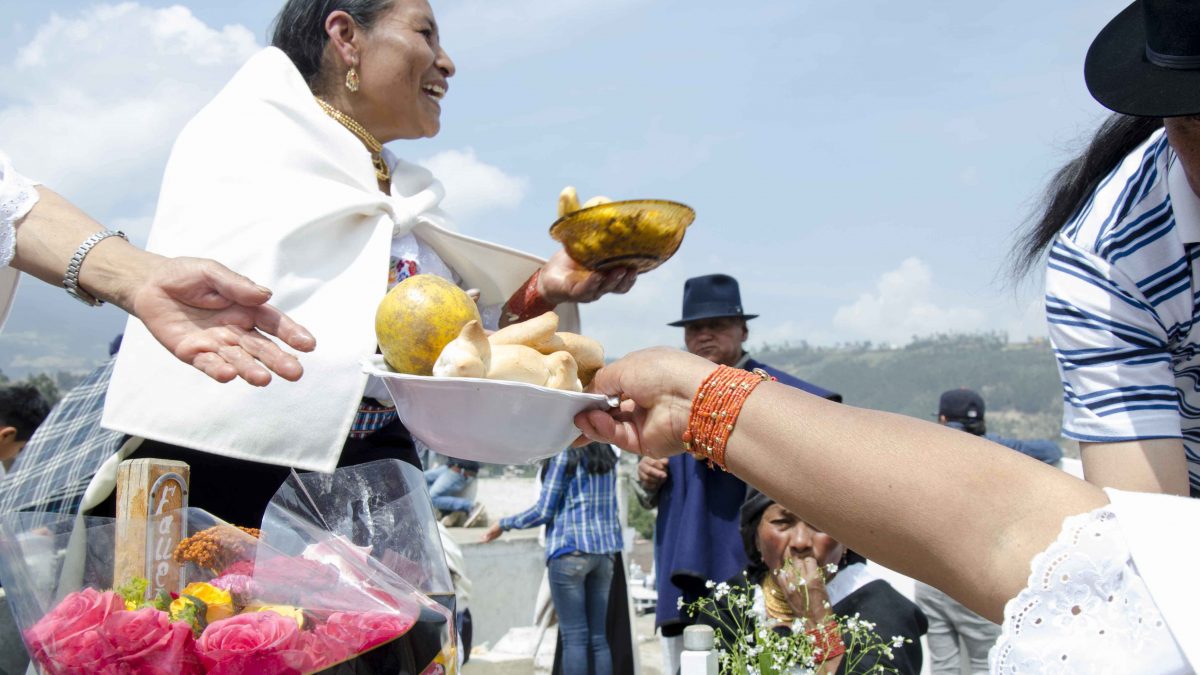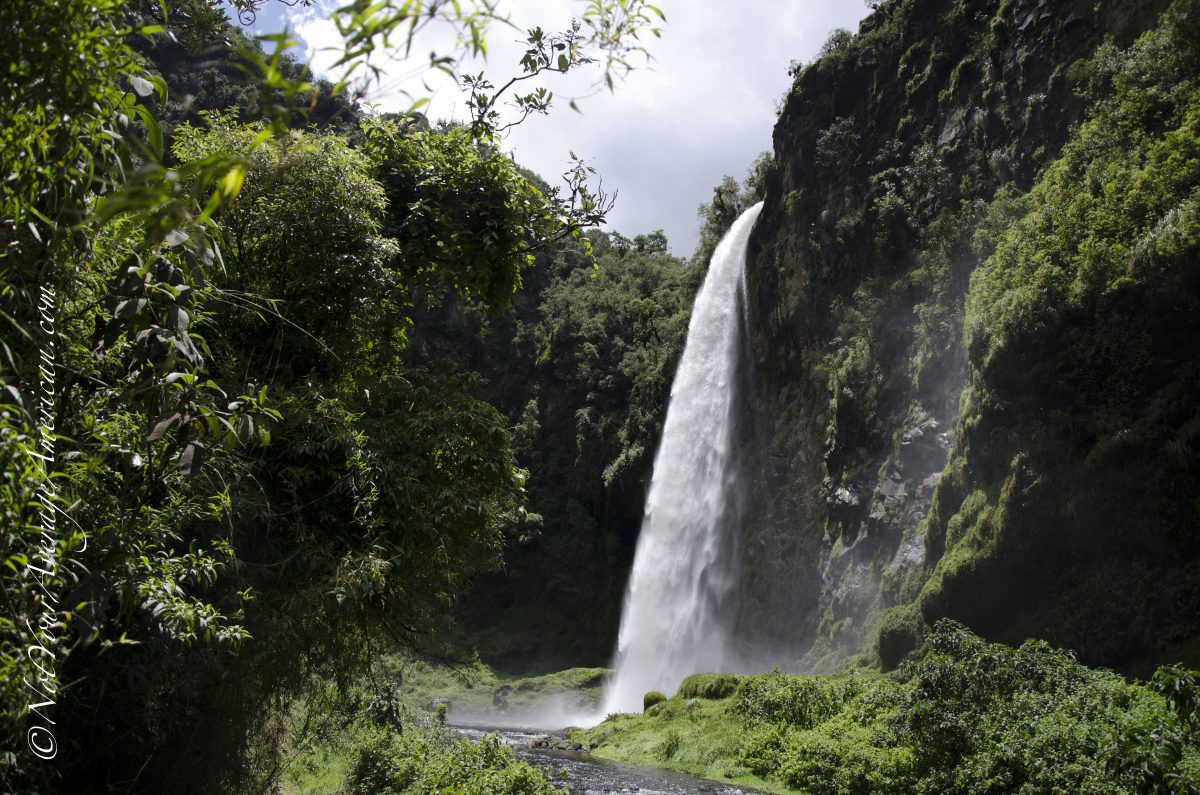As responsible travelers evolve, so do the stories we share.
This article is part of our living archive — trusted content we continue to care for.
First published on February 22, 2019 • Last updated on February 22, 2019.
A strong magnitude 7.6 earthquake rocked many parts of Ecuador in the early hours on February 22, 2019. The epicenter was located in Palora, Ecuador, a remote village not far from the eastern border of Peru. Felt in many of the larger cities, this earthquake is the strongest since the April 2016 earthquake near Manta, Ecuador. Initial reports of damage include fallen structures but few injuries and no deaths.
While magnitude estimates are changing, from a 7.7 immediately following the quake to a 7.5 on some media websites, the Geographic Institute of Ecuador maintains magnitude 7.6 as the official size of this earthquake.
More Information About the Ecuador Earthquake
This quake was immediately followed by a large aftershock of magnitude 6.1 and smaller aftershocks. Because of these aftershocks, many people fear returning to their homes.
According to a Cuenca expat and former geologist, Larry Edenfield, in an interview with Cuenca Highlife:
This was a major earthquake but we are lucky that it happened at depth. I was awake when it happened and knew from how long the shaking lasted that it was a big one. This will probably rank in the top 10 biggest earthquakes of the year but there were several mitigating factors, including the depth, that kept it from being catastrophic.
Reports from Riesgos Ecuador confirm light damage, some injuries, and no fatalities:
[Comunicado] Cuarto comunicado sobre los sismos de magnitud 7.55, 6.1 y 3.6 en #Macas y de 5.9 en #Guayaquil, registrados la madrugada del viernes 22 de febrero de 2019. pic.twitter.com/NPPluBEwTo
— Riesgos Ecuador (@Riesgos_Ec) February 22, 2019
A nearby quake in Guayaquil of magnitude 5.9 is also being called an aftershock by some. However, according to Edenfield, it was a coincidence rather than a direct result of the Macas earthquake.
Although damage appears light, full assessments are not complete. For those of you living locally near Macas or along the E-45 corridor, or in cities where the earthquake was felt heavily like Loja and Riobamba, you can be most helpful by staying home. We know that sounds crazy, but the government needs access to roads so that they can best get help where it is needed quickly and without concerns of traffic. The more of us that stay put, the easier it will be. This will give police, military, and firemen complete freedom to move as quickly as possible to the places where help is most needed.
For Americans living in Ecuador wanting to know the latest safety updates, please make sure you are registered with the Smart Traveler Enrollment Program. American citizens requiring Mission assistance should contact the US Consulate General GYE at 04-371-7000 or US Embassy Quito at 02-398-5200.
For those of you trying to contact friends and family in Ecuador, please be patient. Most of the affected areas have internet connection and cell phone service. However, some communities have lost basic electricity.
Facebook has been an excellent source for information on the safety of people, so if you have an account, check the status of your friend. There is a good chance they may have already check in via the Facebook Safety messaging system.
Sources of Information
The best sources of information from the government of Ecuador can be accessed via:
- Twitter – Riesgos Ecuador
- Facebook, Riesgos Ecuador
Also the hashtags #SismoEcuador and #ECU911 on Twitter have a lot of good information.
How To Help
The question many of you will have on your mind is “How can I Help?” or “What can I do?” This is a natural response after a disaster.
Local Donations
The local Ecuadorian Red Cross is taking monetary donations to their bank account:
- Banco Pichincha
- Cuenta corriente: 3462520104
- Name on the account: Fondo de emergencia
- Beneficiary: Cruz Roja Ecuatoriana – Quito
- RUC: 1791241746001
Overseas Donations
For those of you living further away and watching this via social media, it may seem like there is very little to do. But there are international organizations that will be allowed to enter the country and assist if needed. During the last earthquake in April 2016, the following organizations gave assistance (please do your own research if in doubt on any of these):
- Oxfam (British NGO)
- Shelter Box
- UNICEF through the Children’s Emergency Fund
- Heifer International
- Extreme Response
While the reports of damage are light, these organizations will know where to best place donations to help if needed. Your donation will not go to waste and will be used to help in emergencies situations in other countries if not needed in Ecuador at this point in time. Feel free to let us know in the comments below if a link is not working or if you have one you would like to add.
We hope that you, your family, and your friends are safe and sound. Please let us know if we can direct help in a particular direction.






















